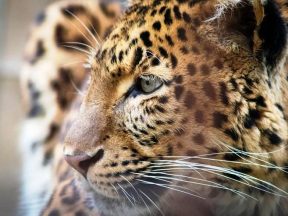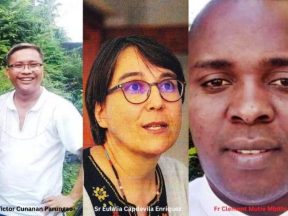Kenya. The Pokot traditional religious sensibility.
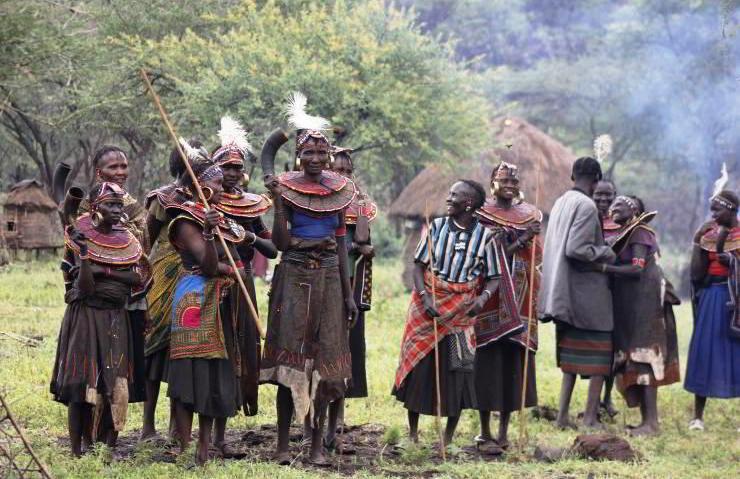
Rather than talking about the religion of the Pokot, an ethnic group living in West Pokot and Baringo counties in Kenya, it is better to talk about the specifics of the Pokot’s ‘religious sensibility’ and how it manifests itself.
The sensibility is one of the Pokot traditional religiosities, which has changed due to the influence by Christianity. Nonetheless, the fact that evangelical churches and “mafuta pole – dini ya roho”(name in Kiswahili: Slow oil – spiritual religion) – a sort of African independent church, are strong in West Pokot proves that the traditional spirituality influences todays’ experience of the divine and transcendence (whether it is about God or spirits of nature).
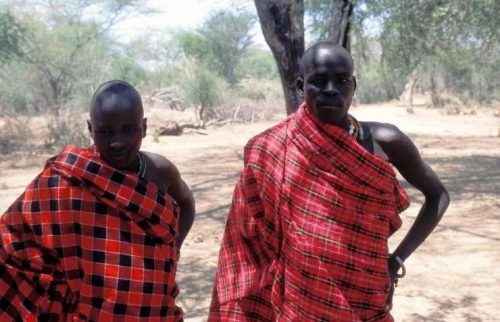
Two young Pokot men. People invoke God for blessings and in times of need. File swm
The entire Pokot tribal system is “a kind of religious system”. This system is not characterised by a belief in a supreme being, ‘God’ and the relationship of individuals and communities to him.
Pokot religiosity focuses on “harmonious relationships among members of society and the fulfilment of the individual as a person.”
The centre of the Pokot religious experience is “life.” Life can mostly be experienced at the level of the individual rather than society because if the individual feels fulfilled, he will be happy; this is self-fulfilment. The longing for “life” is at the core of the Pokot beliefs. These beliefs are the foundation of their rules, and the rules are the means to a fulfilled life.
Life as a Blessing
Life cannot be seen as something concrete; it must be experienced. Life is unexplainable in the absence of systematic explanations of what the Pokot feel and think, and how they feel it. The actions people do, the rites, manners and traditions, are a groping in their efforts to explain it.
Social rules and beliefs are there to create life. Ceremonies to remove that which hinders life. Blessings to promote life in the individual and in the society. Sacred places are those that show flourishing life (energy). The elders who have lived for a long time are the ones to bless, to transmit life. Witches are those who kill life in secret.
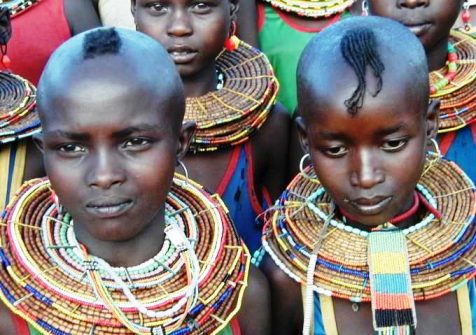
Children are an important factor in Pokot religiosity. File swm
Life is the reason for existence and is within itself, a blessing. Sin, on the other hand, is a curse that is the result of people’s actions and brings misfortune and death. Children are an important factor in Pokot religiosity because they show the fruitfulness of the living, and because children will remember their parents, and in the children; a way to continue living after passing to hades “ngeny” or “tongi“.
Cattle are also important because they are the best way to live a comfortable life (in traditional setups). Cattle are also synonymous with wealth and bring honour and praise to the owner. In this sense, the owner is praised for his ability to look after his possessions and for his courage, as in the past many cattle were won or lost in raids.
The Pokot recognise the existence of some unknown beings that can be called “spirits”. Although no one can see them, they are very real to them. They influence people’s daily lives. They are probably more powerful than humans, but on the other hand, they can be controlled by humans. Their influence is usually felt when something goes wrong, especially when someone gets sick. The more powerful they are, the less they interfere or bother people.
The Spirits
‘Oy‘ are ordinary spirits, no one claims to have seen them. They appear when they possess a person. The understanding is that there are many of them and they all possess each other, ‘oy‘ being a plural noun. When someone goes mad, it is explained as ‘being possessed by ‘oy‘, so that person is called ‘chepoy‘.
The disruption of the individual’s normal life, and by extension of the community, is resolved by the rite of ‘kilokat’, which turns out to be an exorcism. The ‘oy’ are sent away from the possessed person. Nobody knows how this works, but in the same way that a person is possessed, they can be driven out. Of course, not all mad people are ‘possessed’, this is proved when all remedies have failed to cure them. Then people will just say ‘kinyar möt’ (his/her head has gone mad).
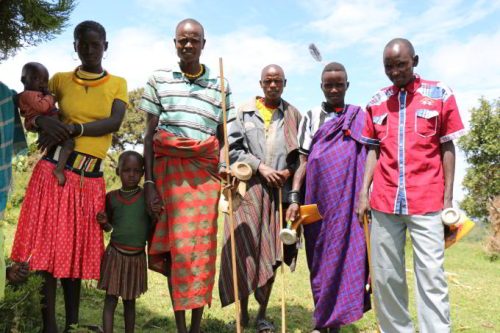
A Pokot family with their friends. The centre of the Pokot religious experience is “life.” File swm
Onyötoy. (sn. onyöt). These are the “spirits of the dead”. They can appear to people in dreams or as ghosts. Their appearance is unwelcome and shows that they are unhappy where they are (Pökot say they come from “ngwen” or “tongď” = Hades). So, when they bother people, they need to be pacified so that things go back to normal. The way to do this is with “pďtöt, lyokat” or “moy“.
For some strange reason, people associated them with ‘demons’. And today ‘evil’ is also called ‘onyöt‘. However, in the traditional understanding of pökot, the evils they bring are not related to sinful actions or temptations. But since sin disturbs harmony just as much as onyötoy, people conclude that they are related. Their relationship is based on the consequences, which seem to be similar. (Christian writings used this term “onyöt” and “onytöy” for devil and demons… but since it is not the same, good translations prefer the neologism “setanian” (Satan, with no plural).
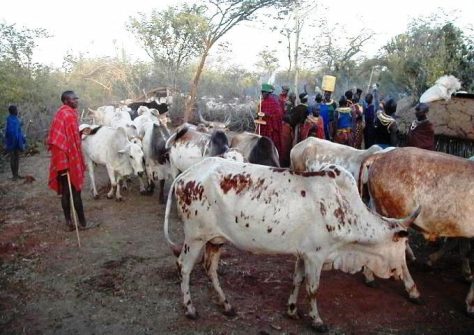
Cattle are also synonymous with wealth and bring honour and praise to the owner. File swm
Ilat is the most powerful of the traditional Pökot spirits. It is the spirit of rain and water. It lives in caves, bushy woods, and deep wells. It appears during storms. Some people claim to have seen it. It can possess people, much as ‘oy‘ does. Once it is determined that ‘ilöt‘ is the cause of the possession, it is sent away with ‘kilokat‘. “Ilat” is the spirit invoked in the oaths and curses of the elders. When someone dies it is said “kicheng ilat“, this spirit has taken him/her.
Töroröt is the modern name for ‘God’. It means something clear, openly seen. But the term is new. A century ago, no one spoke of “Töroröt“, the greatest spirit was “Ilat“. Today, people invoke God for blessings and in times of need. This being has become a powerful ‘helper’. Young generations do not know the history of the name, nor the role of “ilat”.
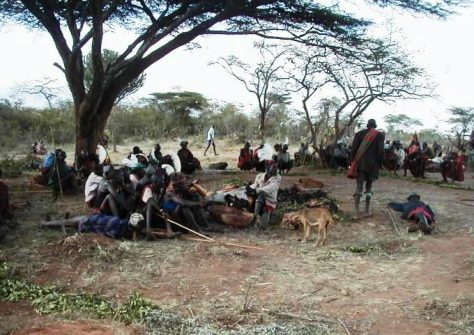
The sacred places are large trees. File swm
Sacred Places
The sacred places are large trees, especially those with milky sap (associated with life because of the milk that was the main food of the Pökot). Common trees of this kind are: mokongwö, konchilwö, simotwö, syoyöwö and big mountains (especially Mtelo, because of the concentration of clouds on its top, also related to Ilat). Some trees may be more sacred than others, usually these trees are considered to be the “dwelling place of the Ilat”, no one can desecrate these places.
Also, places where important community ceremonies have taken place are sacred in a way, and cannot be desecrated; because blessings have been performed in these places, they have been the path of life. Desecration brings bad omens, so something must be done before it happens. What the elders perform are special sacrifices made for these occasions called “putyon“. (Open Photo: Pokot women during a traditional ceremony. Shutterstock/Cheboite Titus)
Herreros Baroja Tomás


